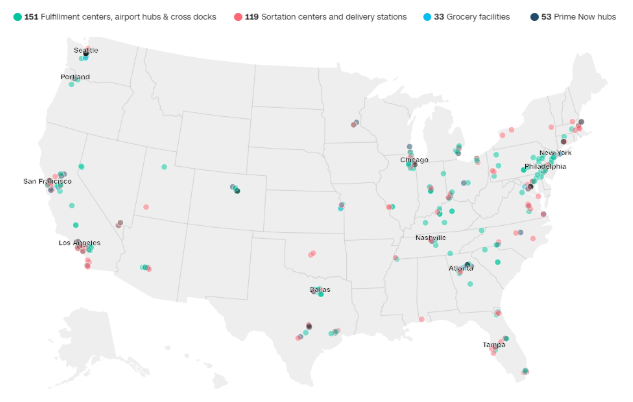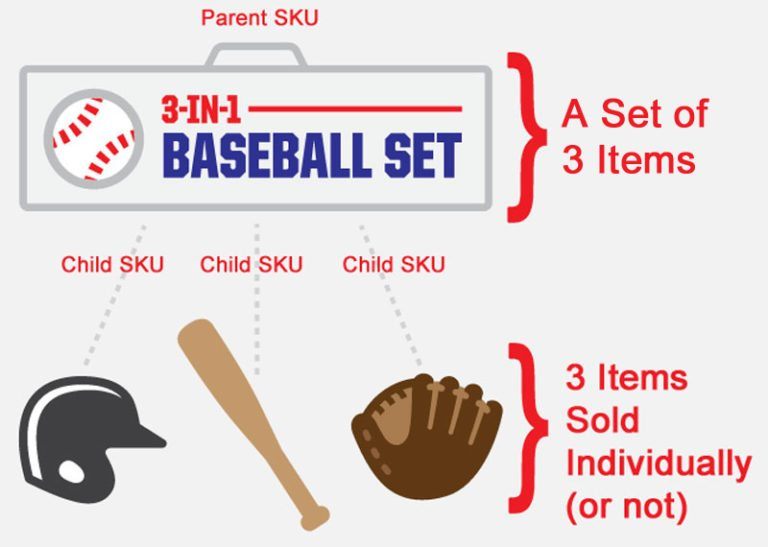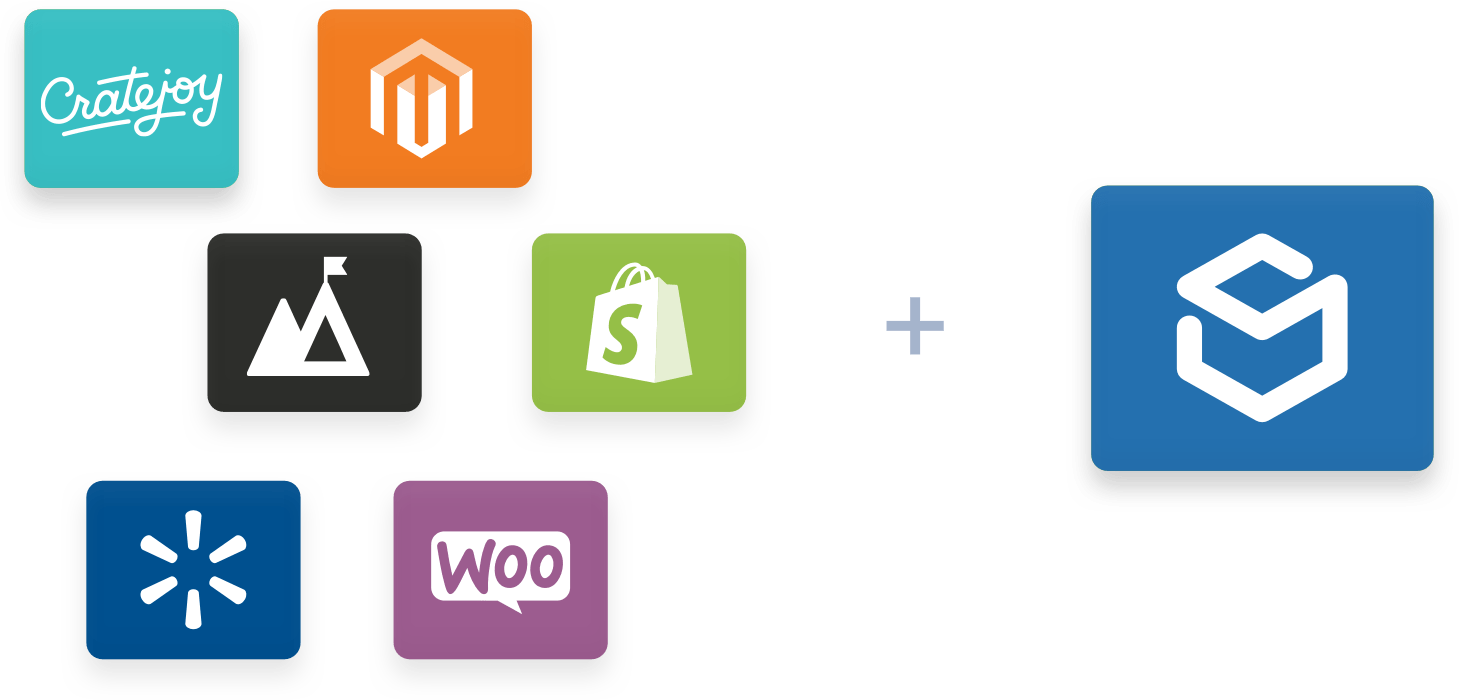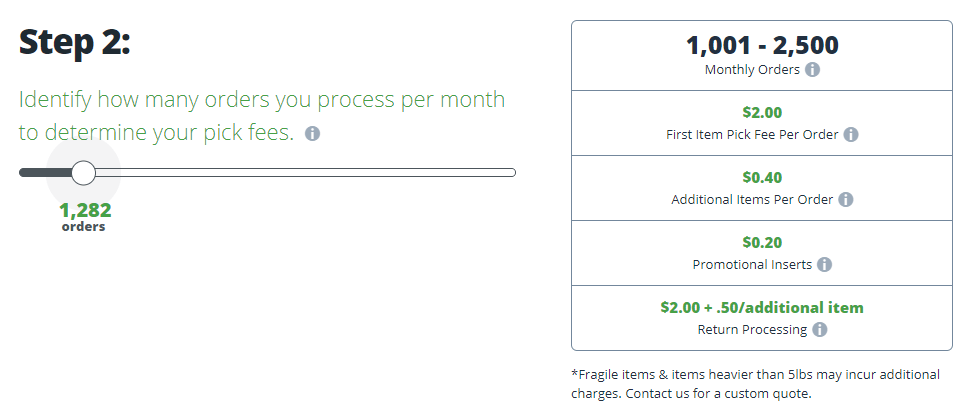6 Questions to Ask Yourself Before Choosing an Order Fulfillment Service
It’s the dream of every modern entrepreneur: After coming up with a good idea for a new product or service, you put together some seed money and start a business out of your own garage. If the idea takes off, you could have your own billion-dollar IPO in just a few years’ time.
This was the story of how Apple got started, of course. It’s also how the most successful ecommerce company of all-time, Amazon, got its start.
In 1994, Jeff Bezos was 30 years old and working at a New York City hedge fund. After he saw that internet use was growing by over 2,000% per year at the time, Bezos abruptly quit his job and decided to start his own online bookstore out of a rented house in Seattle.
After convincing a couple dozen people — including his parents — to invest, he got the company off the ground. Now, it has a market capitalization rate hovering around $900 billion, and Bezos himself is worth $131 billion.
Maybe this is the path you’re on as well. You might have even had enough initial success with your ecommerce store that you’re ready to expand beyond your garage.
But there are quite a few steps between your garage and a 12-figure market cap.
Distribution Networks & Third-Party Services
A big reason why Amazon is so successful now is the company invested in building its own world-class distribution network. Currently, Amazon has 151 fulfillment centers and 119 sortation centers.

You’ll need to use such facilities for your online store to expand, but there’s no need to build them yourself.
Instead, you can use a third-party order fulfillment service. These companies can help you with product storage, packaging and shipping, which allows you to reach more people and sell more products without the immense expense of maintaining your own warehouses.
In fact, you can even use Amazon’s distribution network yourself with its Fulfillment by Amazon (FBA) service. Other ecommerce platforms like Rakuten (and coming soon, eBay) also offer order fulfillment services, and there are companies dedicated to nothing but order fulfillment such as ShipBob and ShipMonk as well.
How Order Fulfillment Services Work
Order fulfillment can be broken down into four phases: managing inventory, receiving orders, packing orders and shipping orders.
- Managing inventory: The order fulfillment service receives your products and stores them in its warehouse. The company must have a highly efficient system in place for its inventory so it can retrieve (or “pick”) products that are ordered quickly and avoid delivery delays.
- Receiving orders: When a customer orders one of your products, this information will be sent to the order fulfillment service. Ideally, your system will be integrated with the service and it will receive the order automatically. Another option is for you to manually enter order information into the service’s support portal.
- Packing orders: The order fulfillment service picks the ordered products from its inventory and packs them carefully in order to prevent damage during transit.
- Shipping orders: The order is finally weighed, labeled and sent out for delivery. One of the main benefits of using an order fulfillment service is it ships a large number of products, which allows the service to benefit from lower, negotiated rates from shipping carriers — and then the company passes the savings on to you!
Six Questions to Ask Before Picking an Order Fulfillment Service
Before you select a particular order fulfillment service for your online store, you should ask yourself these questions first:
1. Where are Its Warehouses Located, and How Many Does It Have?
In real estate, it’s believed that the three most important factors are “location, location, location.” You could say that the same is true for ecommerce order fulfillment.
Since Amazon Prime launched in 2005, customers have been conditioned to expect two-day delivery as a standard option. If you’re not able to provide that, you’ll surely lose customers to your competitors that do offer fast shipping.
The closer a fulfillment center is to a customer, the easier it is to ship a package to them within two days.
Note that the U.S. population is concentrated on its east and west coasts, which are roughly 3,000 miles apart. If your customers are dispersed throughout the U.S., it’s ideal for your order fulfillment service to have at least two warehouses, with one relatively close to each coast.
Generally, the more warehouses an order fulfillment service has, the better. But you need to keep in mind that larger order fulfillment services sometimes require their customers to have a minimum number of orders per month, so they’re not always an option for smaller stores.
2. How Does It Keep Its Warehouses Secure?
Many order fulfillment services set a limit for acceptable “shrinkage” or “breakage,” meaning you’re responsible for the cost of lost or damaged products up to a certain point. Can you trust them to protect your products from being stolen so that you can minimize this cost?
Even if an order fulfillment service does compensate you for lost products, it can still cause delayed deliveries and sudden stockouts. This would have a negative effect on your reputation.
To give yourself some peace of mind, look for the following security measures:
- 24/7 interior and exterior video monitoring
- Multiple sources of backup power
- Access control measures (keycards, biometrics, etc.)
- Metal detectors at entrances and exits
- Digitized pick-and-pack process for automated inventory tracking
- Full background checks performed on all warehouse employees
3. What Services Do You Need?
Storage, packaging and shipping are services provided by nearly every order fulfillment company.
But there are additional services you may be interested in as well. For example, if you sell gift collections or subscription boxes, you should look into a “kitting” service that allows you to combine separate products with multiple stock keeping units (SKU) into a single package with one SKU.

Other services that are provided by some, but not all, order fulfillment services include:
- Assembly: Some order fulfillment companies are capable of doing much more than just putting your products in an envelope or box — they may be able to provide custom assembly, soldering, lettering, numbering and embroidering if needed.
- Product Branding: Improve brand recognition by instructing your order fulfillment service to add your logo to packaging materials.
- Promotional Inserts: Spread awareness of your other products and special offers to increase sales for the rest of your inventory.
- Cross-Docking: With cross-docking, instead of being stored, your products are loaded out for delivery as soon as they arrive at the order fulfillment service’s facility. This is helpful for shipments that are particularly time-sensitive, such as perishable goods.
- FBA Prep: FBA can be somewhat strict about its requirements for receiving products from online stores, which can result in stores being charged fines or even having their inventory refused. This has led to other order fulfillment companies offering to help stores prepare their packages and meet FBA requirements in exchange for a fee.
4. Does Its Software Integrate with Your Ecommerce Platform?
Most order fulfillment services will provide you with an app you can use to keep track of your inventory, orders and shipments.
Ideally, this app will be able to integrate with the ecommerce platform you’re already using (Shopify, BigCommerce, Magento, etc.). This is especially useful if you’re already using other apps as well, such as a drag-and-drop page builder or abandoned cart saver. That way, you won’t need to jump back and forth between different solutions for each tool you use for your online store.

5. How Good Is Its Customer Support?
Again, most customers are going to expect you to deliver their order within two days. That doesn’t leave much room for error.
If it looks like there’s a problem with an order, you should be able to contact them and start working toward a resolution right away. Otherwise, you risk delaying the delivery, which could end up costing you a customer for life.
Is there a way for you to contact the order fulfillment service immediately? In other words, does the company offer 24/7 live support, or are there times when you would need to leave a message and wait for someone to get back to you? Even if the service does offer 24/7 support, that fact alone doesn’t tell you everything. Just because someone picks up the phone doesn’t necessarily mean that they’ll be able to consistently resolve last-minute issues.
This is where online reviews can be quite useful. Publications like PCMag can provide you with a lot of valuable information on this subject, and you should also check out Google and Yelp for direct feedback from customers.
6. How Much Does It Cost?
We saved the question that you’re probably most interested in for last: What does investing in an order fulfillment service mean for your bottom line?
This can be a more difficult question to answer than you may think. First of all, many order fulfillment services don’t publish pricing details on their website. In that case, you’ll need to contact them to get a quote.
Even when you have all the information in front of you, there’s a lot to process. It can take a good bit of time to compare the cost of order fulfillment services, because many of them use highly specific methods for their pricing.
For example, let’s take a look at FBA pricing. The fulfillment fees are charged per unit, with different fees for Standard-size and Oversize packages. Furthermore, within the Standard-size category, there are separate fees for different sizes and weights:
- Small (10 ounces or less);
- Small (10 to 16 ounces);
- Large (10 ounces or less);
- Large (10 to 16 ounces);
- Large (1 pound to 2 pound);
- Large (2 to 3 pounds); and
- Large (3 to 21 pounds).
Within the Oversize category, there are different fees for:
- Small Oversize (71 lb or less);
- Medium Oversize (151 lb or less); and
- Large Oversize (151 lb or less).
And then there’s also an extra charge for clothing and items containing lithium batteries.
Plus, while the “fulfillment” fee covers picking and packing, shipping and handling, customer service and product returns, it does not cover storage. That’ll cost you extra, and there are different rates for January-September and October-December.
Complicated, right?
Thankfully, not every pricing model is quite as complex as FBA. ShipMonk makes it easy to figure out how much its fulfillment service will cost you. On the pricing section of its website, there’s a slider you can adjust to your number of monthly orders, which will then show you what the rate would be at that level of order volume.

But even ShipMonk pricing gets complicated when you account for its other services. For storage, there are different rates for the Small Bin, Medium Bin, Large Bin, X-Large Bin and Pallet options. They company also lists additional fees for one-off projects, such as inventory counts and shipping container unloading.
Regardless of the order fulfillment service you’re considering to use, keep an eye out for hidden costs, such as setup fees and account management fees.
Indeed, a company might try to lure you in with a low base rate only to surprise you with a barrage of fees after you’ve committed to a contract. But if you take your time and do the research, you’ll be able to make the right choice for your store.

Adam Ritchie
Adam Ritchie is a writer based in Silver Spring, Maryland. He writes about ecommerce trends and best practices for Shogun. His previous clients include Groupon, Clutch and New Theory.



